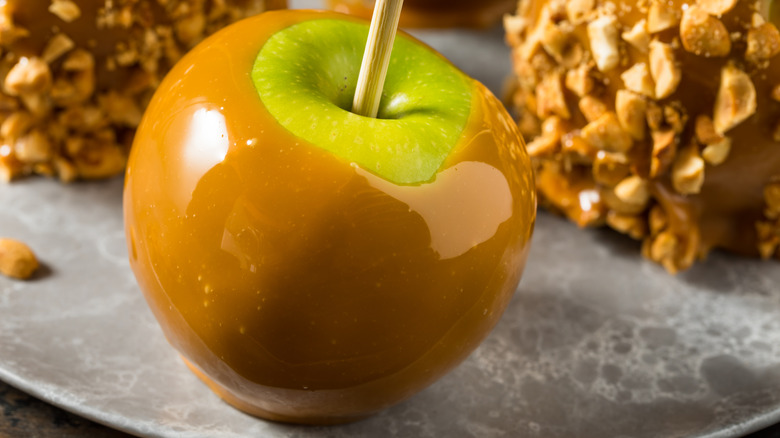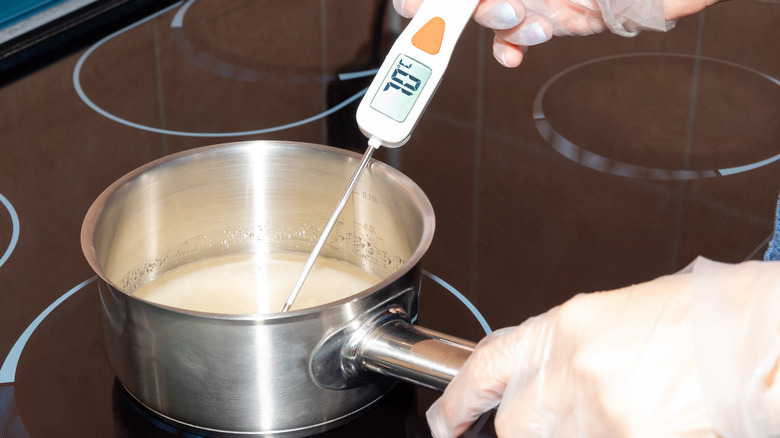How, Exactly, Do You Melt Caramel For Apples?
They say an apple a day keeps the doctor away. Although coating that apple in deliciously sweet caramel might not be part of a physician's advice, everyone has to treat themselves sometimes. What better time to do so than when fall and the holiday season roll around? Sure, it's nice to grab a caramel apple when it catches your eye at a state fair, but these delightful sweets taste best when apples taste best — in the autumn! Whether it's caramel apples for Halloween or as a treat for the kids on a brisk fall weekend, the great thing about this classic snack is that you can make them at home. They may seem like a no-brainer to prepare but don't underestimate the crucial step of melting the caramel.
There are a couple of ways you can go about this. The first (and easiest) way is to heat premade caramels in a saucepan low and slow until they melt together and become liquid. The second way is to make the caramel yourself, which requires medium to medium-high heat to cook and thicken your sugar solution. Either way, it is crucial to have a candy thermometer ready when preparing the caramel coating. The ideal temperature for your caramel sauce when you're ready to start dipping is at or just under 200 degrees Fahrenheit. Then, set your sauce aside until it cools to this temperature.
More tips for perfect caramel
If you take the premade caramel route, little can go wrong unless you step away from the stove for too long without stirring. Homemade caramel, while more complicated to make, can result in much tastier caramel apples. However, making the perfect homemade caramel requires a little bit of know-how.
The first problem you want to avoid is sugar crystallization. The glucose and fructose molecules in raw sugar prefer being in a solid crystal shape — even when heated. To counteract this, add corn syrup or citric acid to the rest of the ingredients before heating the caramel sauce. To further mitigate potential crystallization, refrain from stirring the ingredients as they boil. This seems counterintuitive, but stirring can agitate the sugar molecules too much and lead to the formation of crystals.
How do you keep the caramel from burning? The answer is simple. Have your candy thermometer handy. Temperature is everything when working with sugar. Your homemade caramel solution will be done when it reaches 245 to 250 degrees Fahrenheit. When it reaches this stage, immediately remove the saucepan from the stove and leave it to cool. If it heats just a few degrees over this target temperature, your sugar can go from perfect to overcooked, leaving you with less-than-ideal caramel apples.

